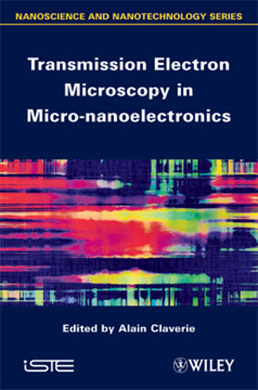
Today, the availability of bright and highly coherent electron sources and sensitive detectors has radically changed the type and quality of the information which can be obtained by transmission electron microscopy (TEM). TEMs are now present in large numbers not only in academia, but also in industrial research centers and fabs. This book presents in a simple and practical way the new quantitative techniques based on TEM which have recently been invented or developed to address most of the main challenging issues scientists and process engineers have to face to develop or optimize semiconductor layers and devices. Several of these techniques are based on electron holography; others take advantage of the possibility of focusing intense beams within nanoprobes. Strain measurements and mappings, dopant activation and segregation, interfacial reactions at the nanoscale, defect identification and specimen preparation by FIB are among the topics presented in this book. After a brief presentation of the underlying theory, each technique is illustrated through examples from the lab or fab.
1. Active Dopant Profiling in the TEM by Off-Axis Electron Holography, David Cooper.
2. Dopant Distribution Quantitative Analysis Using STEM-EELS/EDX Spectroscopy Techniques, Roland Pantel, Germain Servanton.
3. Quantitative Strain Measurement in Advanced Devices: A Comparison Between Convergent Beam Electron Diffraction and Nanobeam Diffraction, Laurent Clement and Dominique Delille.
4. Dark-Field Electron Holography for Strain Mapping, Martin Hÿtch, Florent Houdellier, Nikolay Cherkashin, Shay Reboh, Elsa Javon, Patrick Benzo, Christophe Gatel, Etienne Snoeck and Alain Claverie.
5. Magnetic Mapping Using Electron Holography, Etienne Snoeck and Christophe Gatel.
6. Interdiffusion and Chemical Reaction at Interfaces by TEM/EELS, Sylvie Schamm-Chardon.
7. Characterization of Process-Induced Defects, Nikolay Cherkashin and Alain Claverie.
8. In Situ Characterization Methods in Transmission Electron Microscopy, Aurélien Masseboeuf.
9. Specimen Preparation for Semiconductor Analysis, David Cooper and Gérard Ben Assayag.
Alain Claverie is the Director of CEMES, a laboratory of the Centre National de la Recherche Scientfique (CNRS) located in Toulouse, France, which is at the forefront of knowledge in the fields of nanosciences, nanomaterials and instrumentation. CEMES has funded the French METSA and is the coordinator of the EC-funded ESTEEM2 project, two networks aimed at developing and rendering available to a large community new techniques of electron microscopy. He has worked throughout his career as a coordinator or partner of several EC-funded projects aimed at understanding and modeling technological processes used by the microelectronic industry.